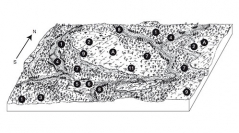

 Geodiversitas
28 (3) - Pages 477-498
Geodiversitas
28 (3) - Pages 477-498The stratigraphy of the Neogene deposits along the Middle Struma River (SW Bulgaria) is revised. Five genetic lithocomplexes are recognized, replacing the numerous lithostratigraphic formations currently used. The basic concept is that the upper Miocene alluvial-proluvial deposits along the Middle Struma River Valley are a product of “braided rivers” transporting important volumes of loose rocks, characterized by rapid and irregular accumulation. This accumulation occurred in conditions of increasing aridification. Uprising of the Rila and Pirin Mountains occurred later. Unlike northern Greece, where Vallesian landscapes were relatively open, humid habitats and forest vegetation seem to be well represented in the late Vallesian of the middle Struma region, but herbaceous and shrub communities already had a significant role. The Mesta River might have flowed into the Middle Struma, south of today’s Petrich tectonic basin. The Turolian landscape can be reconstructed thanks to the rich Turolian mammalian faunas from the numerous (about 40) localities along the Middle Struma. Dominant taxa are Palaeoreas lindermayeri, Hipparion (H. brachypus, H. gr. mediterraneum-moldavicum, and H. cf. macedonicum), Gazella, Tragoportax, giraffes. Their likely ecological requirements show that the “Pikermian biome” (sensu Solounias et al. 1999) was dominated by open woodlands resembling park type forest (rather than by shrubby vegetation). By the end of the middle and the beginning of the late Turolian, time of accumulation of Piperitsa Genetic Lithocomplex, characterized by reddish terrigenous-sandy deposits, open landscapes probably prevailed, with spots of sclerophyllous woodlands. This is probably the time of the first occurrence of the genus Anancus in the middle Struma, Bulgaria, and Europe.
Paleoenvironment, stratigraphy, biochronology, late Neogene, Bulgaria, fossil mammals, Vallesian, Turolian, Rhinocerotidae, Orycteropus